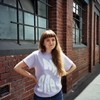All images by author
Advertisement
Max Delany: No, the Lego donation is for a separate project. When Lego wouldn't provide material for Letgo Room, we had to seek other alternatives. Letgo Room has been made only from plastic building blocks manufactured in China.
Advertisement
It did work well in terms of China being a production center for the rest of the world, and this whole idea of the copy and the fake.
We did actually collect a whole carload—the seats were submerged—and that will be sent to Weiwei's studio in Berlin along with Legos from other international collection points. It will be used in a new work in the future, which will focus on political art and freedom of speech.That's the focus of Letgo Room as well, isn't it?
Yes. Letgo Room is an installation, almost a constructivist installation, which Weiwei has referred to as a "temple" devoted to Australian subjects who are all well known as activists or champions of human rights and freedom of speech, and also freedom of information. It represents a cross section and various cultural contexts—from grassroots community activism, to eminent figures who are engaged in international human rights law. It includes people such as Julian Assange, who is obviously devoted to freedom of information on the internet, to Indigenous activists such as Gary Foley.
Some fascinating and extraordinary women, and also the gender nonspecific activist Norrie May-Welby. Other figures include Gillian Triggs, who has been very involved in the Human Rights Commission. It strikes me as a generous work. Weiwei would have had to have conducted a lot of research into Australia's history of human rights.
We consulted a wide range of academics and human rights organizations, community groups, activists, and artists to put together a long list for Weiwei to consider. Then it was up to him to compose the installation, and to focus on a shorter list of subjects. He sees a connection to the people he chose; those who are engaged with the more profound questions of our time. It's a huge piece. How hands-on was Weiwei in putting it together?
The design came from Weiwei and his studio. A series of templates were established, but it was really developed in Melbourne. It involved almost 100 volunteers, a number of our staff members, and colleagues from Weiwei's studio. But it really came down to the volunteers—mostly art students and the general public. It was a profoundly engaging process, done only over a period of two weeks, which is an extraordinary feat considering there were over two million building blocks.
